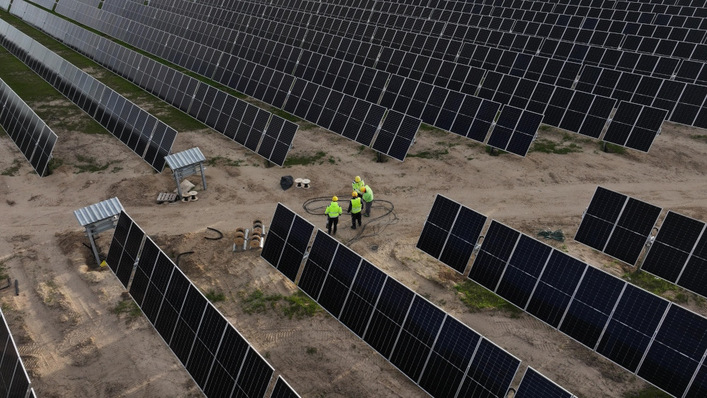43% of respondents said the ETS will have a major impact – a much higher share compared to ‘national climate policies’ and ‘other EU-wide climate policies’ which both polled 27%. Compared to 2019, this shows more confidence in the EU ETS which had 35% and national climate and energy policies scored 43%.
Amid the backdrop of coronavirus lockdown, there were huge differences in perceptions on future EUA prices as 60% of respondents prior to the mid-March European lockdown expected EUA prices to remain around or above €25/t in 2020. However, all respondents following Mid-March expected a price below €25/t in 2020 and 2021.
Anders Nordeng, Senior Analyst at Refinitiv Carbon Research and co-author, comments: “The shift in sentiment towards the ETS is interesting given the fact that the European Green Deal has dominated the climate policy discussions since the Commission presented its roadmap in December 2019.
“The Green Deal will eventually entail substantial changes also to the EU ETS, but so far, the discussion has revolved around the 2050 Climate Law, whose draft proposal was presented in early March.
“The differences in price expectations also indicate that the COVID-19 pandemic and the following containment measures have pushed carbon stakeholders into a far more bearish position, both in the short- and medium term.”
Changes to the ETS
Of six potential adjustments to the ETS, a solid majority believe the Linear Reduction Factor (LRF) will be increased to reflect a more ambitious climate target (hence that the overall annual supply of EUAs will dwindle at an accelerated rate). Some 37% think this will be decided by 2023, another 28% say by 2025.
The Market Stability Reserve (MSR) intake rate is currently at 24%, but this will by default switch to 12% after 2023. A majority of the respondents expect a change of rules, to keep the high rate also beyond 2023. Some 35% expect this will be decided by that time, while 20% think a high rate will be re-imposed in 2024 or 2025. Another 20% think it will switch to the default rate of 12% after 2023 and remain at a low level.
Relatively few expect land transport emissions to be added to the EU ETS, at least not before 2030. The highest share (30%) say it will not be included. For maritime transport emissions we see higher shares expecting inclusion in the EU ETS, either by 2025 or by 2030.
Did you miss that? COVID-19 has turned Europe’s carbon market upside down
For the companies regulated under the EU ETS, a key question is whether the 2030 emission target will be ramped up, since an increase will inevitably lead to a reduced supply of EUAs.
Among the twelve regulated companies that answered this part of the survey, seven expect the 2030 target to be raised to 50%, two expect an increase to 55%, and three respondents think the target will not change from its current level of 40% reduction (compared to 1990 levels).
Anders continues: “Unlike with price expectations, we do not see a similar corona effect on expectations for policy changes, as responses differ little before and after 15 March.
“This suggests respondents are relatively confident reforms will go ahead as planned despite early calls from central European leaders for climate to take the back seat during the economic recovery.”
Growth of Chinese ETS
One notable feature in this year’s survey is the high number of respondents (44) involved in Chinas emerging national carbon market and/or in the existing regional pilot markets. Among them, two thirds expect trading in the national market to begin in earnest this year. That would be in line with political signals from Beijing. Interestingly, one quarter believes trading will not start before after 2020, that is a higher share than when we asked the same question in 2019.
Support for companies’ focus on environment, social and governance measures
Asked about environmental activities, a question that allowed for multiple answers, most said they use videoconferencing as an alternative to travel as well as energy efficiency measures in the office. Out of 148 participants answering this question, only 44 purchase carbon offsets to reduce their carbon footprint.
Of those who do engage in carbon offsetting, most have been at it for quite some time: 63% (out of 43 respondents to this question) started offsetting in 2018 or earlier, and only 14% started purchasing offsets last year.
Responses indicate that carbon offsetting is generally perceived as an environmentally responsible activity - even among those who do not offset their emissions themselves, the practice finds support. Just a few respondents consider carbon offsetting to be a “pure greenwashing”, most see it as a credible way to account for emissions. Major part of the respondents strongly agree that offsetting allows companies that do not emit GHGs contribute to emission reductions. Out of those who answered the question about cost, almost 70% somewhat or strongly agree that offsets allow firms to achieve maximum emission reductions at the lowest cost. Relatively inexpensive way of reducing emissions could be one of the key features making offsetting attractive for the companies pursuing ESG objectives. (HCN)







